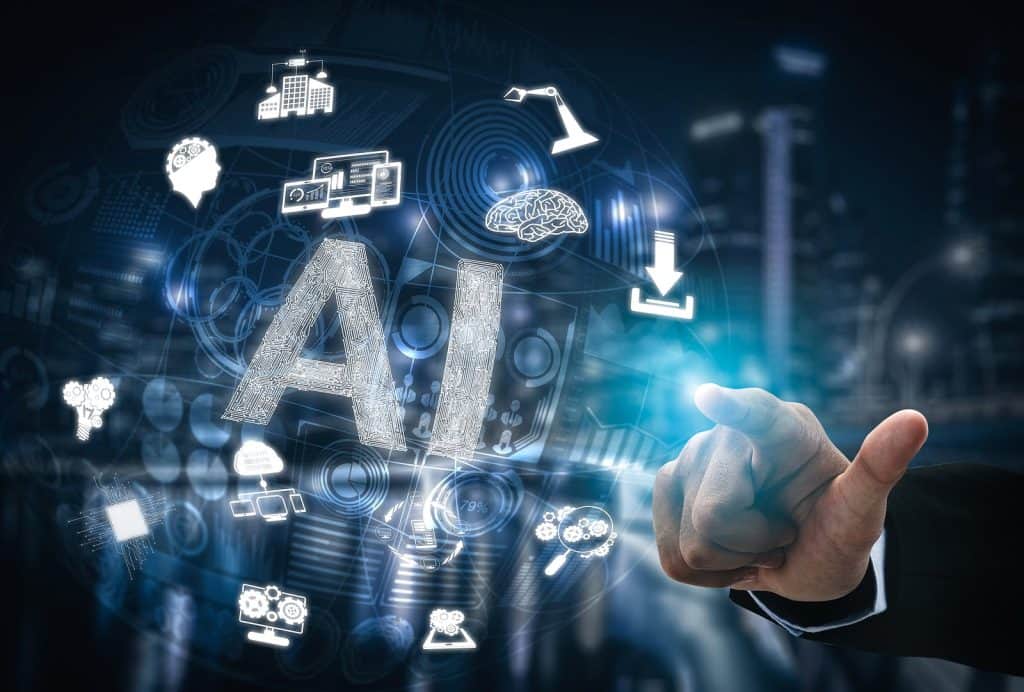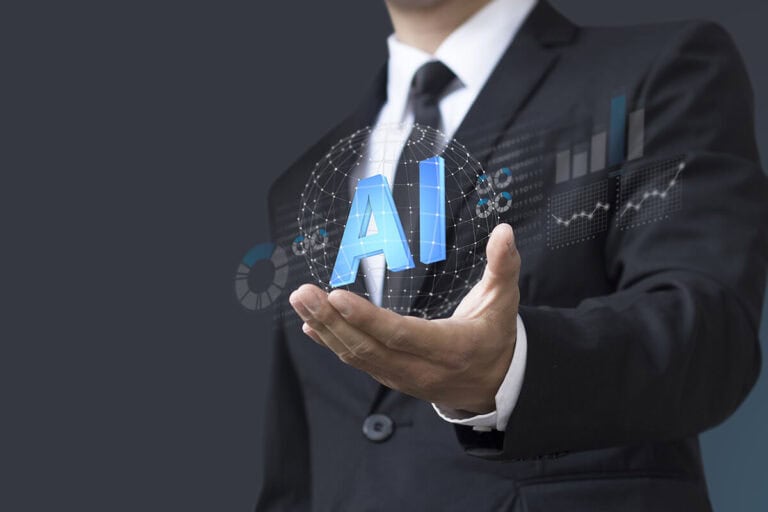Artificial Intelligence (AI) has made leaps and bounds regarding its capabilities. It’s an increasingly popular term, often associated with computers performing tasks that ordinarily require human intelligence, such as recognizing speech or visual patterns, making decisions, and language translation. But that definition has taken a backseat since the launch of LLMs like ChatGPT.
Table of Contents
ToggleBut we are not here today to talk about how great generative AI is or can be. We are here to take you on a journey that detects the various limitations and threats AI poses right now and will collectively try to give you suggestions for overcoming them.
The current state of artificial intelligence across the globe
The constraints of AI are rooted in its understanding of intelligence.
An AI developed by a prominent tech company compelled the reigning world champion of the board game Go to retire early.The winner conceded that “AI has become an entity that cannot be defeated.”
By harnessing reinforcement learning, the AI could play millions of games against itself at a superhuman speed, a feat unachievable by humans in a lifetime. However, the hardware cost for such AI can rise to as much as $25 million.
Interestingly, despite its grandeur, this AI champion would be stumped by the slightest alteration to the game’s rules. It would also need help to leverage its knowledge to conquer any other game. On the other hand, humans excel at applying existing knowledge to novel tasks with limited data – a sentiment widely acknowledged by many AI pioneers.
AI cannot compete with the human brain, still!
Contrary to popular belief, AI still struggles to rival the human brain. Several experts propose that advancements in hardware and algorithms are essential to overcome this hurdle, with some even suggesting the incorporation of quantum computers.
While deep learning and neural networks were designed to imitate how our neurons communicate, there is still a substantial amount we still need to learn about the brain’s intricate workings. Technically speaking, our brain surpasses thousands of CPUs and GPUs in performance.
One expert stated, “Even our supercomputers are weaker than the human brain, which can run one exaflop calculations per second.” Still, with our algorithms yet to be improved, predicting the same computational power we need is challenging.
Merely increasing processing power doesn’t directly translate to heightened intelligence, as evidenced by the brainpower of various animals. It was noted that certain animals have larger brains and more neurons than humans, debunking the notion of a hardware tipping point leading to superior intelligence.
An essential part of AI applications is recognizing their limitations. While we have yet to achieve human-level intelligence, organizations are devising innovative methods to surpass these hurdles.
One such promising approach is explainable AI.
Traditionally, AI functioned as a black box, where users provide questions, and the algorithm generates the answers. It was conceived out of the need to execute complex tasks, which no programmer could fully code due to the vast logical decision variations. Therefore, AI was given the freedom to learn independently. However, this scenario is changing.
Explainable AI fosters trust between humans and machines, creating a collaborative, symbiotic relationship. Since explainable AI technologies are equipped with the knowledge, alongside their data training, they comprehend their problem-solving methods and the context making the information relevant.
Understanding why AI arrived at a certain answer becomes increasingly critical in high-stakes situations. For instance, certain space agencies would not implement any system that cannot explain its reasoning or provide an audit trail.
Explainable AI provides insights into the AI’s decisions, enhancing human-machine collaboration. However, this approach is only sometimes applicable.
Take self-driving cars, a benchmark of our AI intelligence level. In fully autonomous vehicles, human operators are incapacitated to assist the machine in making immediate decisions. To address this, a hybrid approach is adopted.
A renowned autonomous vehicle company utilizes deep learning for pedestrian detection, supplemented by lidar and hardcoded programming as a safety measure to prevent collisions.
Developers employ individual components that may not be intelligent in isolation but can yield smarter results when combined. By designing a smart structure, developers challenge our understanding of AI limitations.
A celebrated demo that left audiences in awe employed this clever design in conjunction with advanced technology in the speech-to-text and text-to-speech domains, capitalizing on what people perceive as intelligent in a human.
What are the categories of artificial intelligence?
There are primarily three categories of AI based on their abilities:
1. Narrow or weak AI
Narrow AI, sometimes called Weak AI, is designed to handle single tasks and is restricted by its programming parameters. Examples include technologies that support facial and speech recognition.
2. General or strong AI
General AI, or Strong AI, can comprehend and learn any task a human can. An example of this is expert systems and autonomous vehicles.
These expert systems leverage AI and machine learning to emulate the judgment and actions of a professional in a specific field, intending to support experts in their work.
As they garner more experience, these systems enhance their performance like humans. Medical diagnosis tools like those used for detecting cancer are a prime example.
3. Artificial superintelligence
Super AI, or Artificial Superintelligence, theoretically can surpass human intelligence by displaying cognitive skills and the ability to think. In essence, ASI can outperform a human in any given task. However, this remains a theoretical concept with no real-world applications to date.
The true limitations of artificial intelligence
Despite the advancements in AI, a significant gap exists between what these systems can achieve and the instinct, imagination, and strong reasoning skills characteristic of human understanding. AI lacks the nuanced decision-making skills we humans possess, a factor critical to making informed choices.
This limitation is rooted in the way AI functions. While humans can rationalize, learn from experiences, and synthesize information, machines do not inherently possess these human-like capabilities.
Another challenge with AI systems lies in the “black box” problem. AI algorithms are often complex and hard to interpret. They make predictions and decisions based on large datasets, but understanding how they arrive at those decisions usually takes time. This lack of transparency makes identifying errors or biases in the algorithm easier, leading to unintended consequences.
A further limitation is the reliance on AI and ML for high-quality data. For machine learning to work effectively, it needs a large amount of accurate data to learn from. Inadequate or inaccurate data can result in incorrect predictions or decisions, making data quality an essential factor in the success of AI and ML applications.
That being said, here are the six true AI limitations.
While AI significantly reduces human errors, boosts efficiency in repetitive tasks, and facilitates swift, intelligent decisions without exhaustion, it has certain limitations that are currently hard to surmount:
1. Lack of autonomous thinking
AI operates based on the data it has been trained on. This makes it a champ at pattern recognition, a task humans may find time-consuming. However, it also implies that AI struggles with adapting to changing circumstances or demonstrating flexibility, lacking the ability to logically deduce traits, question conclusions, or critically think about issues beyond its pattern recognition tasks.
2. Deficit in Creativity and Self-Improvement
AI can only perform tasks it has been programmed to accomplish, limiting its capacity for divergent thinking or displaying supernatural creativity. However, when developing an effective marketing strategy, the power of human expertise shines through. Furthermore, any modifications or enhancements to AI must still rely on the skillful hands of humans, who manually fine-tune the underlying codes.
3. Transparency Issues
AI decision-making is often opaque, leaving us yearning for a deeper understanding of the underlying processes. The learning process and subsequent decision-making need to be more readily explainable, bridging the gap between the mysterious realm of AI and human comprehension. However, there are ongoing attempts to dissect this process through tools like explainable AI, unraveling the intricate multistream of algorithms and providing insights into the decision-making mechanisms. Although it will take time to make significant progress, the pursuit of explainable AI promises to demystify the black box and empower us to navigate the intricacies of artificial intelligence.
4. Inherent Bias
Despite AI’s potential to eliminate human bias, it has been found to incorporate preferences, leading to unintentionally skewed results.
5. Data Privacy Concerns
AI’s omnipresence in everyday devices has raised privacy concerns, as these devices continually process our private and sensitive data. However, adequate data protection measures could help mitigate this issue.
6. Moral and Ethical Dilemmas
Using AI in lethal autonomous weapons systems (LAWS), colloquially known as killer robots, raises serious ethical and moral questions. The deployment of these systems requires ethical guidelines to prevent misuse.
While AI has its constraints, the potential benefits that it can bring to businesses and society at large make it an area of great interest and exploration. Understanding and addressing these limitations is an important step in harnessing the full potential of AI.
Overcoming the Artificial Intelligence limitations

Despite these challenges, advancements are being made to overcome the limitations of AI. Explainable AI, for example, is being developed to tackle the “black box” problem. Explainable AI aims to create more transparent algorithms, providing insights into how these systems arrive at predictions and decisions. This transparency can help to identify and correct errors or biases in the algorithms.
Equally critical is the role of data management and governance in ensuring high-quality data for AI and ML. Organizations must invest in data management and control to have high-quality data to train their algorithms effectively.
The future of AI is heading towards a better alignment with human understanding and reasoning. While it’s unlikely that AI will fully replicate human thought processes, strides are being made toward creating smarter systems that can work more closely with humans.
Businesses can adopt several strategies to overcome the limitations of AI and leverage its capabilities effectively.
Below we share a detailed exploration of these strategies, examples, and visual aids for a more interactive reading experience.
1. Continuous improvement and algorithmic updates
Businesses should invest in continuous improvement of algorithms to enhance AI’s capabilities over time. Regular updates to algorithms and models can help address limitations and improve performance. Companies like Google constantly refine their AI algorithms, such as Google Search, to provide more accurate and relevant results.
2. Hybrid Intelligence
Combining human intelligence with AI can overcome limitations and achieve better outcomes.
Businesses can use a hybrid approach where AI assists human operators in decision-making.
For instance, in healthcare, AI-powered diagnostic systems can aid doctors in making accurate diagnoses, combining the expertise of both AI and human professionals.
3. Explainable AI
Transparency and interpretability of AI decisions can build trust and facilitate collaboration.
Explainable AI techniques enable humans to understand how AI arrives at its conclusions.
This is particularly important in critical applications like healthcare or autonomous vehicles.
For example, organizations like IBM and DARPA actively research explainable AI methods to provide insights into decision-making processes.
4. Data quality and bias mitigation
Ensuring high-quality data inputs and addressing biases can lead to more reliable AI outcomes.
Businesses should implement robust data collection processes and utilize diverse datasets to reduce biases.
Regular auditing and validation of AI models can help identify and correct discriminatory behavior.
IBM Watson OpenScale offers tools for bias detection and mitigation in AI models.
5. Collaborative learning
AI systems can learn from collective human knowledge through collaboration platforms.
Businesses can develop AI systems that continuously learn from human inputs and feedback.
Crowdsourcing platforms like Kaggle allow data scientists to collaborate and improve AI models.
6. Reinforcement learning and self-improvement
Businesses can explore reinforcement learning techniques to enable AI systems to improve autonomously. Reinforcement learning allows AI to learn from its experiences and make iterative improvements. Examples include DeepMind’s AlphaGo, which learned to play the game Go at a superhuman level through reinforcement learning.
7. Quantum computing
Quantum computers can overcome the computational limitations of traditional systems.
Quantum machine learning algorithms can perform complex computations faster, enabling more advanced AI capabilities. Companies like IBM, Google, and Microsoft are actively researching quantum computing for AI applications.
Concluding thoughts
We hope this article covers the limitations of AI and how businesses can overcome them with apt strategies. The world of AI has seen a revolution since the launch of GPT-4 by OpenAI, and there are many more new players in the field of generative AI tools.
The world is going to face a revolution and disruption at the same time. A study by Statista revealed that AI would create $2.3 million in jobs while disrupting 1.8 million simultaneously.
So, AI’s limitations will be overcome to a level that can be built into business processes for better automation and streamlining. Until then, the real answer lies in how businesses create a balance or augment AI with their human workforce to maximize productivity.
FAQ
A: AI has several limitations, including its reliance on data quality and quantity, the lack of common sense reasoning, the inability to understand context and emotions, the potential for bias and discrimination, and the challenge of explainability and transparency.
A: Overcoming the limitations of AI requires a multifaceted approach. One solution is to improve the quality and diversity of training data to reduce bias and enhance performance. Additionally, advancements in machine learning algorithms and deep learning architectures can address the limitations of common sense reasoning and contextual understanding. Collaborative efforts between AI developers, domain experts, and ethicists are crucial to ensure ethical AI deployment and minimize discrimination. Finally, developing explainable AI models and promoting transparency can help build trust and mitigate concerns.
A: Human intervention plays a vital role in overcoming AI limitations. Humans can provide oversight and validation to ensure the accuracy and fairness of AI systems. Human-in-the-loop approaches, where human judgment is integrated with AI algorithms, can help address limitations like context comprehension and emotional understanding. Additionally, human experts can help interpret AI decisions and explain when needed.
A: AI bias can be mitigated through various measures. First, ensuring diverse and representative training data that encompasses different demographics and contexts is crucial. Regular audits and evaluations of AI systems can identify and address biases. Employing fairness-aware algorithms and techniques that explicitly account for bias can also help. Lastly, involving diverse teams in developing and testing AI models can provide different perspectives and minimize bias.
A: Ethical considerations are paramount in overcoming AI limitations. Developers and organizations should prioritize fairness, transparency, and accountability throughout the AI lifecycle. Respecting user privacy, ensuring data protection, and obtaining informed consent is critical. Ethical frameworks and guidelines can help guide the development and deployment of AI systems, addressing concerns like bias, discrimination, and the potential impact on employment. Regular ethical audits and ongoing public discourse are essential to navigate the ethical challenges associated with AI.




